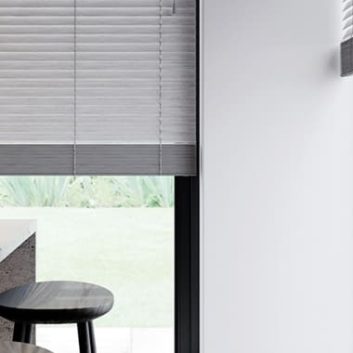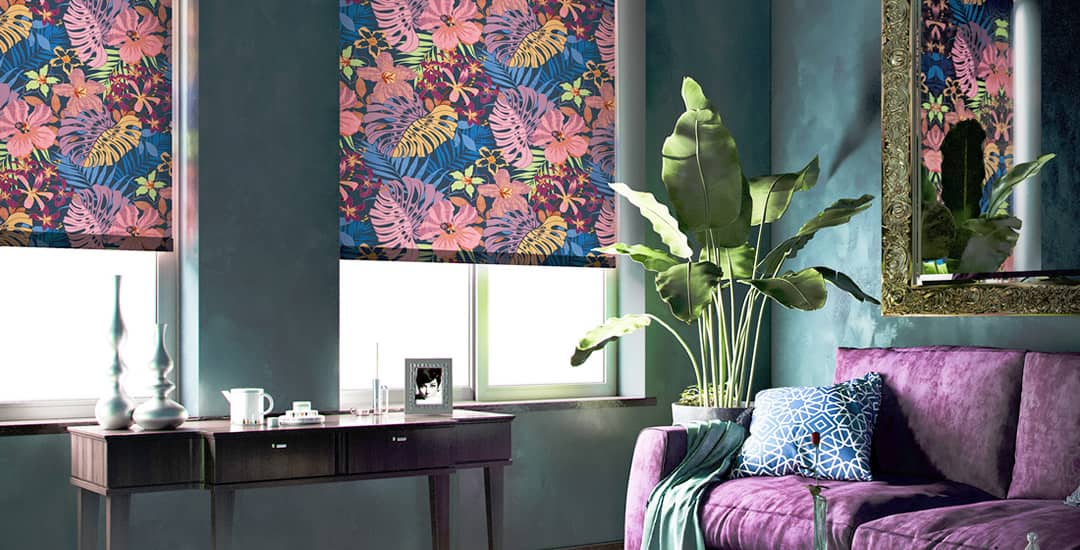
If you’re wondering what type of window blinds you need or are still weighing up the benefits of blinds versus curtains, you might find it handy to have the five main styles of window blinds explained, along with some supporting info on their most common uses.
Worry not, new blind seeker, for I have trod the path you now seek to tread. Imagine for a moment, if you will, how things went on my very first day at English Blinds: I actually thought that roller blinds and Roman blinds were the same thing. Idiot, AMIRIGHT?
If you think that’s bad, you should have heard the silence when I tried to defend myself by telling them that I’d always had curtains…
Anyway, here’s the skinny. In terms of how window blinds work and their basic appearance, there are five main types or “families” of window blinds. When you start getting down into the finer details like fabrics and materials, mechanisms, controls, and all of the other factors like blackout options or cordless operation, well, you could spend years studying the science of it all, and imagine telling your nan you’ve got a PhD in window blinds.
But even given all of these multiple options for bespoke window blinds, unless you’re buying blinds from Wish or somewhere else questionable on both the targeted advertisements and innovation fronts, the window blind options you have to choose between will come from one of five main families or categories.
With this in mind, I’m going to use this blog post to give you a quick-and-dirty rundown on the five most popular types of window blinds and how they work, plus a short summary of what type of rooms or environments they’re best suited for.
Read on for information on the five main types of window blinds in the UK.
Roller blinds
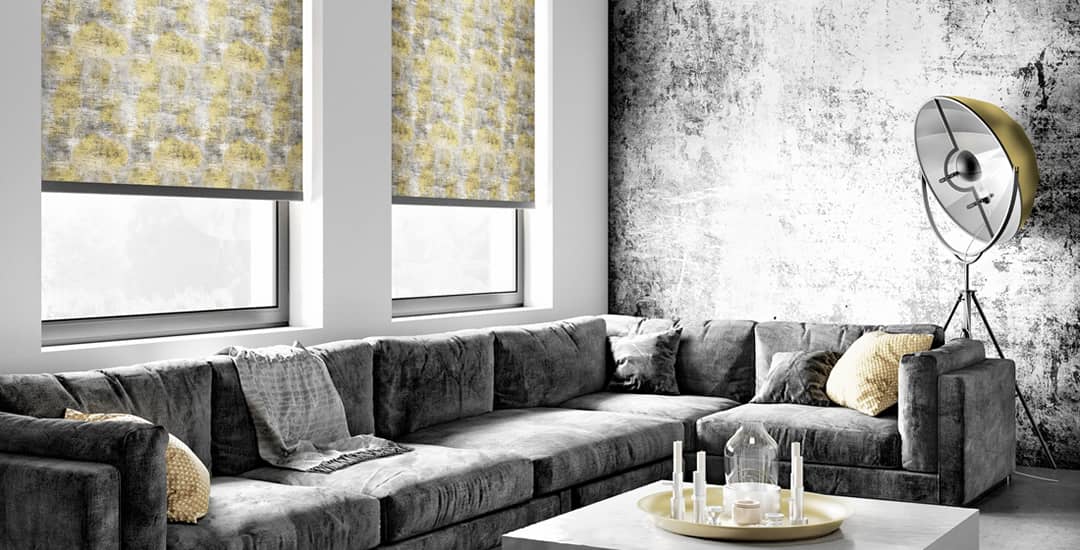
Roller blinds consist of a piece of fabric that is wound like a toilet roll around a central wooden or aluminium roller tube and held into place with a locking tape. They’re dropped and raised using either a spring operation or a side control (like a cord) and roll up or down around their central tube, and their bottom bar serves as a weight to make the blind hang correctly when extended.
The bottom of a roller blind’s fabric might be plain or come in a fancy scalloped or braided design, and as for the fabric itself, you have a metric shedload of options available from plain or printed natural fabrics to vinyl, PVC, and much more.
Roller blinds are also widely available in blackout fabrics.
If you’re trying to choose between different types of blinds, roller blinds are the most versatile and popular option overall; there isn’t really any application they’re a poor fit for. They also have the additional benefit of not taking up too much space within the window recess.
The sheer range of fabric options they can be made from make them viable for use in damp or humid environments like kitchens and bathrooms, and they’re also well suited to children’s rooms, as roller blinds are child safe and can be made in a wide range of different patterns and designs to appeal to both toddling princesses and teen goths alike.
Venetian blinds
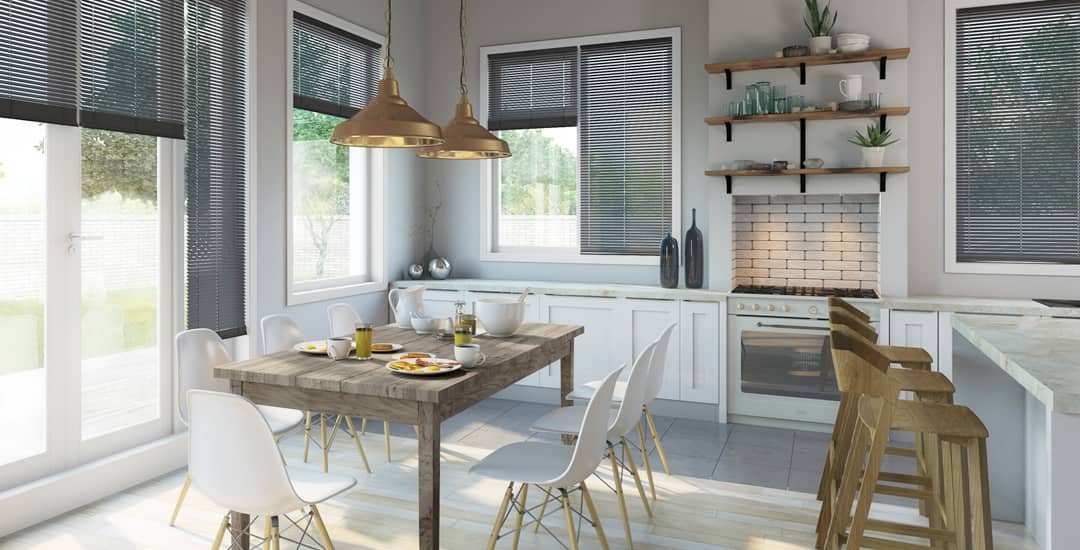
Venetian blinds are made of overlapping horizontal slats, which are suspended from a headrail and supported and kept neat by vertical ladder cord or tapes. As well as being able to concertina your blinds up and down to have them fully or partially open or shut, the slats themselves can be tilted to help to filter the light and prevent glare.
When we refer to Venetian blinds, these days this almost universally means aluminium Venetian blinds, in contrast to wooden Venetian blinds, which I will cover next.
The slats of aluminium Venetian blinds can be painted in more or less any colour and finish (matt, metallic and so on) you can imagine, and this is achieved with enamelled-finish stove paint, which is ridiculously hard wearing and designed to maintain its appearance without reflecting signs of wear for many years.
Wooden blinds
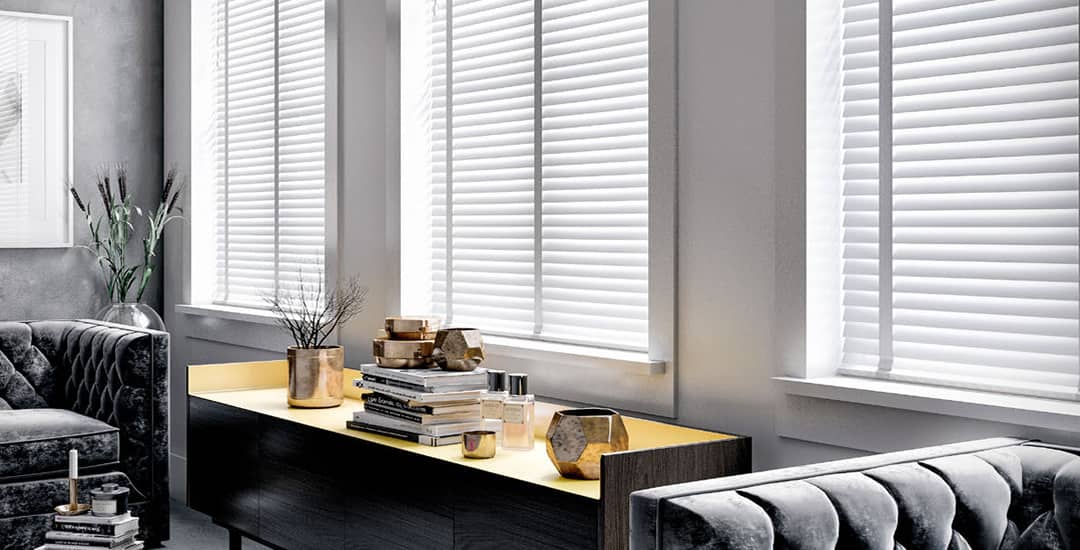
Wooden blinds are a type of Venetian blinds, and much like that “genuine imitation leather” sofa you nearly got catfished into buying, come in a range of faux options as well as real wood too. Unlike that genuine imitation leather sofa, however, faux-wood Venetian blinds look perfectly acceptable and are virtually indistinguishable from the real thing.
You might also see wooden blinds referred to as “timber slatted blinds” or “horizontal slat blinds,” and they’re actually one of the oldest forms of internal window blinds around. Wooden blinds developed originally as an evolution of the external timber shutters that were a thing back in the day when glass was prohibitively costly, which if you have a teenage footballer in your locale, you will probably be aware, it often still is.
Wooden blinds are hardwearing, practical, and understated, and go well with practically any style of décor from modern to minimalist to neutral to country cottage to shabby chic, but don’t let this latter put you off.
One of their main advantages then is their versatility; they suit virtually all rooms and design styles, and never go out of fashion.
Roman blinds
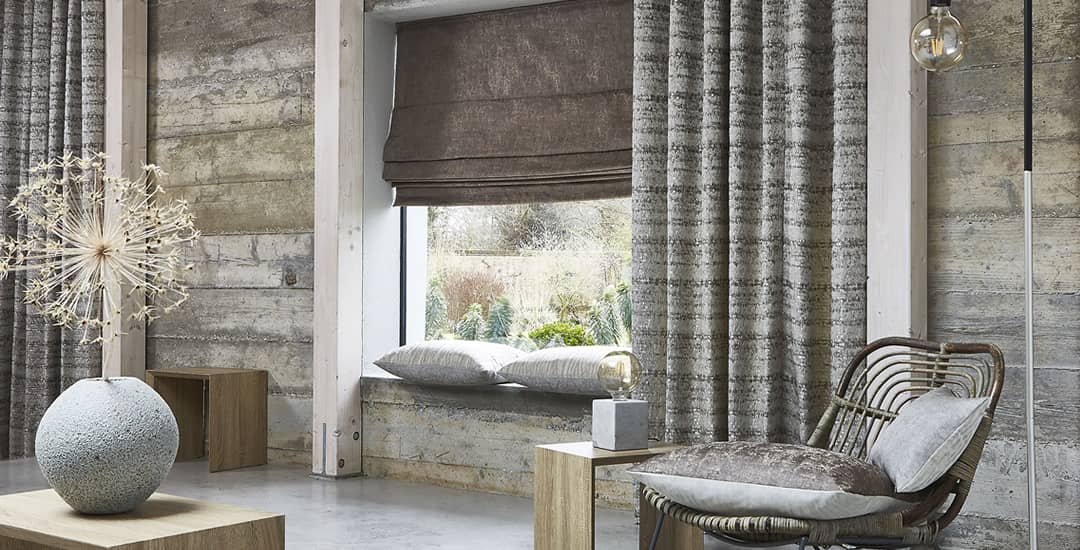
Roman blinds are the type of elegant and fancy-looking blinds one tends to see on the pages of glossy interiors magazines, and they are the absolute first and last word in understated chic and quality. Well, ours are anyway, if yours came from eBay and seemed suspiciously cheap, I could not possibly comment.
Roman blinds are usually constructed of curtain material that forms into flat panels when dropped, and which folds back up into even horizontal pleats or folds when closed. They’re controlled by hidden cords running up the back of the blind itself.
Roman blinds are the blinds you tend to choose for rooms you spend a lot of time in and decorate with great care. This is commonly rooms like the living room, other day rooms, and perhaps your bedrooms.
However, Roman blinds aren’t always well suited to bathrooms or kitchens, as such rooms tend to accommodate a reasonable amount of humidity, nor are they really well suited to children’s rooms, as children’s rooms tend to accommodate children.
Vertical blinds
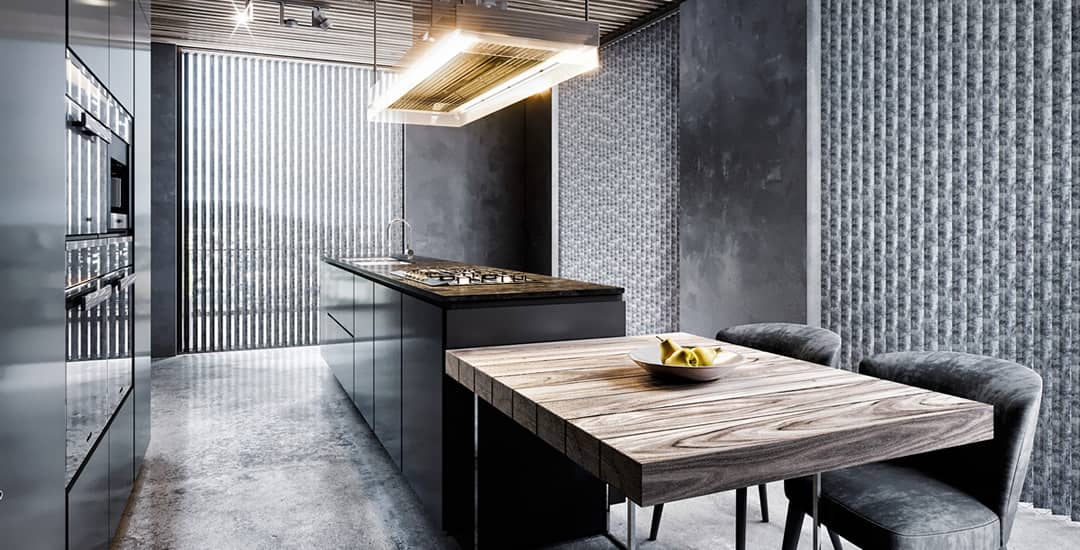
Finally, vertical blinds are something many of us associate with the office, but assuming that said office wasn’t designed by someone paying a lot of mind to aesthetics, the mental image this may have given you of vertical blinds is probably doing them something of a disservice.
Vertical blinds are a bit different from the other different types of blinds explained above in that they’re, well, vertical. Their slats or “louvres” are formed of stiffened fabric that might be an actual natural fabric or a form of PVC, and they’re usually treated with a stiffening agent to ensure they hang correctly.
Aside from the fact that the slats/louvres hang vertically not horizontally, the other key difference between vertical blinds and other types of blinds is that they open and close side to side (like curtains) rather than up and down.
Vertical blinds hang from a rigid aluminium headrail and can either be opened or closed fully (with the array closing in a concertina pattern to the side) or partially, and the slats themselves can also be tilted partially open at an angle with fine control precision. This latter point is one of the things that makes them so popular in offices, which will be self-evident to anyone whose computer screen becomes the subject of blinding glare for half an hour when the sun moves round the building after lunch.
Vertical blinds are a good pick then for a home office, or an actual office; but they’re far from a one-trick pony in that respect, and they’re also great on very wide or high windows/doors, such as patio doors or in conservatories, where their sun-filtering talents once more come into their own.
Vertical blinds can also be made in a wide array of colours these days too (once more, don’t let the twenty-year-old off-white mildew-stained abominations in your workplace put you off) and in blackout fabrics as well, to help to both aide your snoozing attempts and to keep rooms faced by large patio doors or conservatory windows from becoming greenhouses during the summer.
Any questions? Want to know what sort of blinds are a good pick for a certain room or need ideas on what to choose for a particular application? Tell me in the comments.

